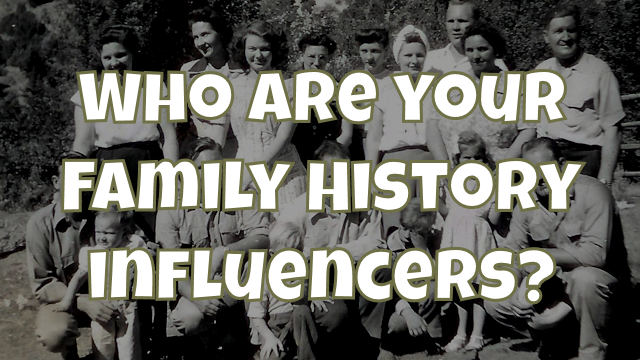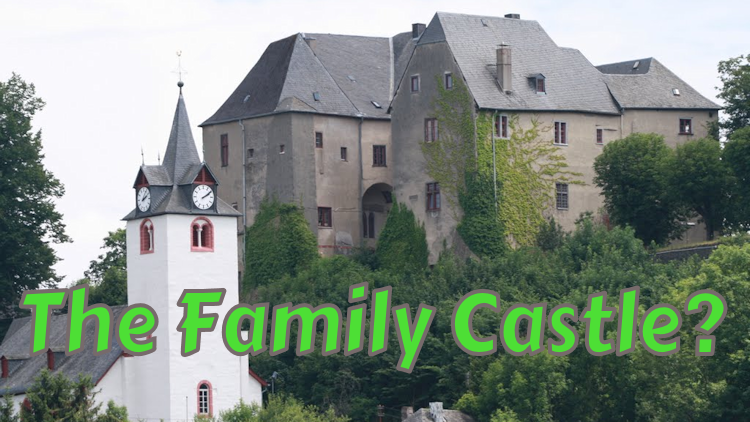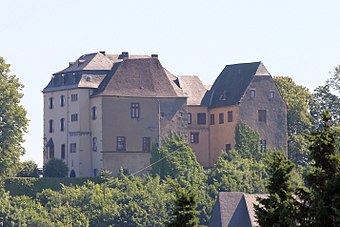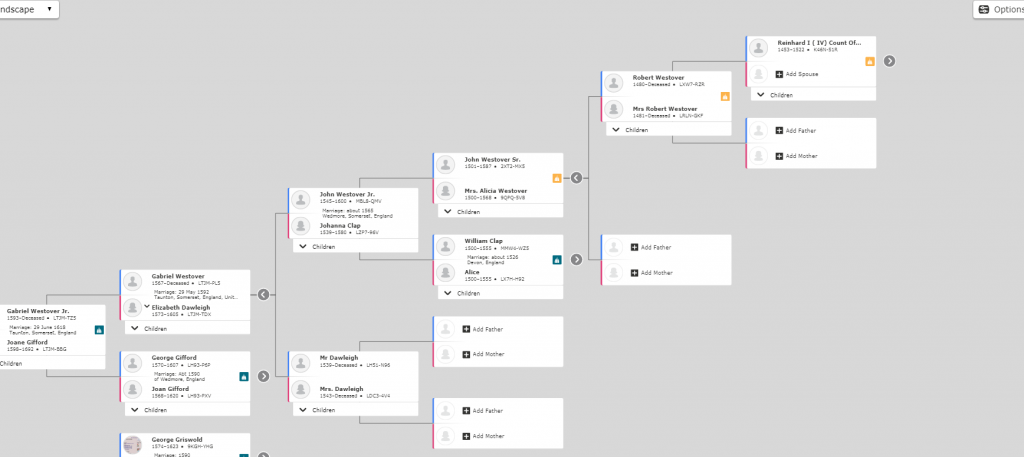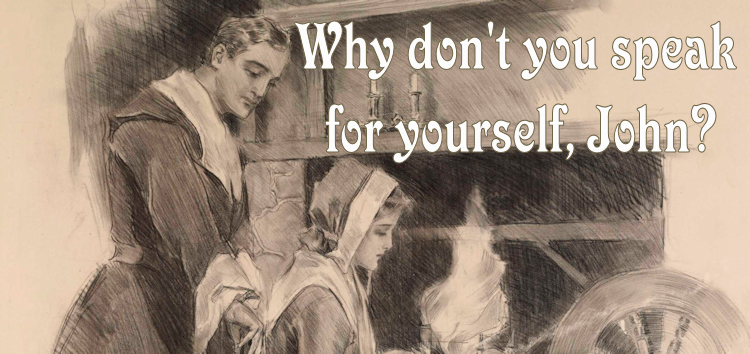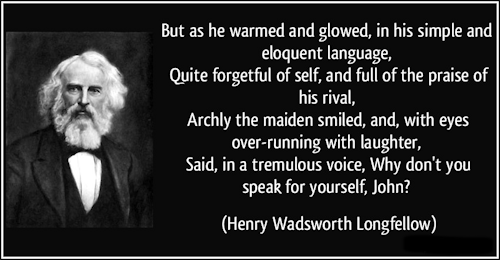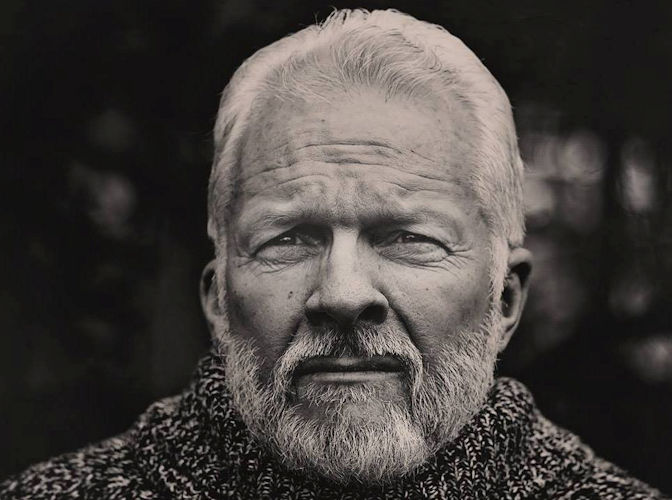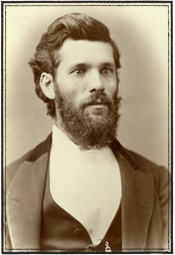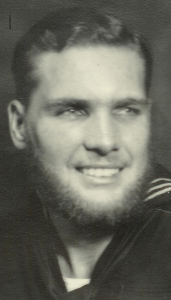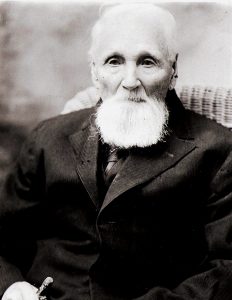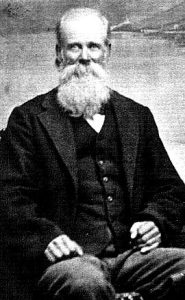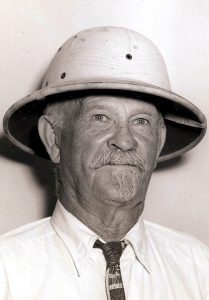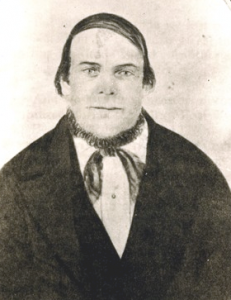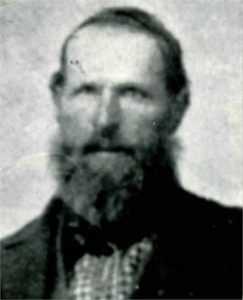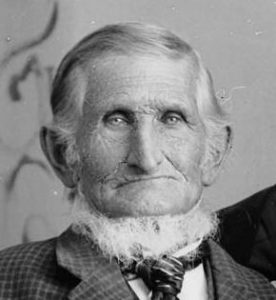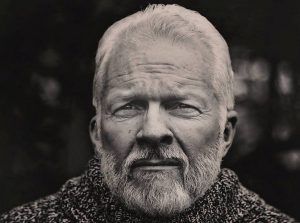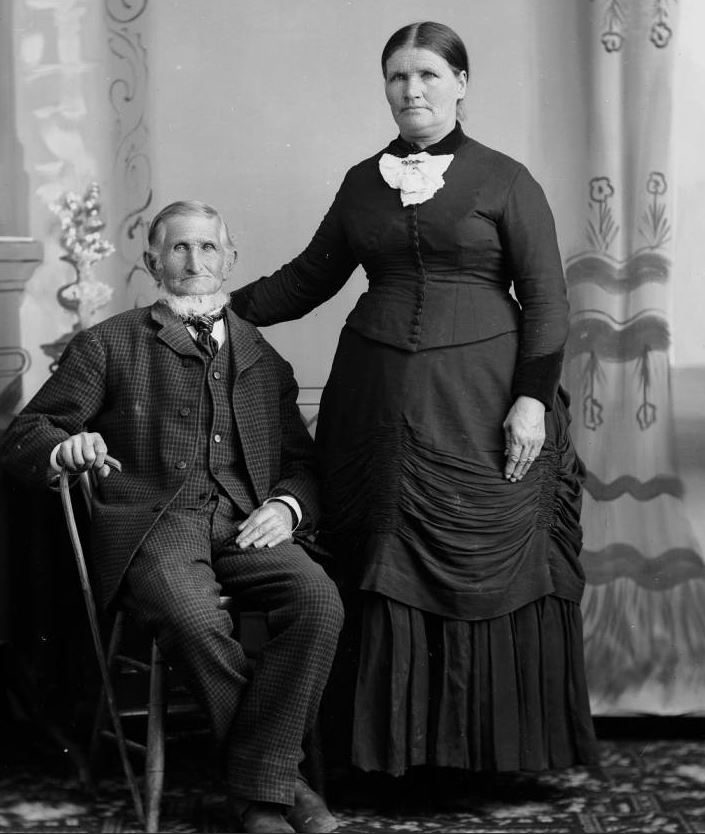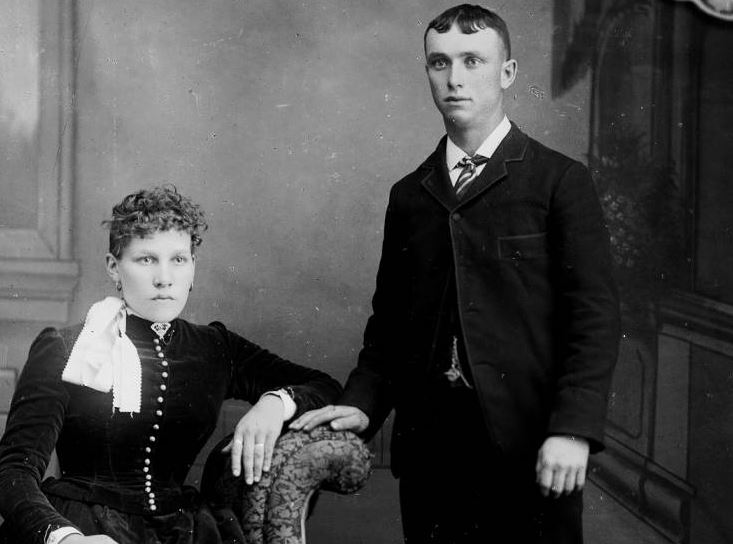Influencers in My Family History
Two very separate events have kind of taken over my thoughts this past week.
A while back I was downstairs in the treasure room and I came across a letter written by my grandparents to the Church asking a question about how to pursue a family line in England.
Attached to the letter was the response from someone in the Genealogical Department of the Church in Salt Lake City. The letter was dated around 1974.
The instructions included an address for a contact at some library in London who they were certain could put them in contact with someone at a library somewhere else in England.
This whole thing made me think of how far family history research has come. 1974 was not all that long ago. Yet look what they had to do in their search for information!
Another thing that has given me reason to think are the many new contacts I’ve made recently as a result of the DNA testing I’ve done through Ancestry.
All of the people I have met are distantly related but they come with fresh energy and almost excitement in our shared worked.
One of them, after contacting me at Ancestry and then coming here to our little family history website, asked: “Who are your influences? What is there in our history that makes you want to do this?”
As I’ve thought about it I have enjoyed a spirit of thanksgiving – almost a counting of the family history blessings, you could say – that has brought many tears this past week. There are so many influencers for me. I think they are worthy of recounting here.
 These are my grandparents, Leon and Maurine Westover. I count them as among the greatest influences upon me in many ways, not just in family history. As a grandson they invested in me a great deal of time and love in just teaching me I was part of something greater – my family. Both of them have been gone from this life for 30 years now and yet their influence is still so very profoundly felt and appreciated. My Grandpa was so smart to talk to me about both the past and the future. I can remember him many, many, many times telling me about the Westover Ranch in Idaho. I had never gone there as a child and I regret to admit it took me many years – after most of my own children were born – to get there. He knew that yet he planted those seeds and dang if he didn’t prophetically foresee what a symbol it would become in my life. Grandma’s approach with Family History with me always so wisely focused on my Mother and her insistence that I had to help my mother with that work. While she was free with the details of the Westover and Riggs family history she knew and had worked on she let me know what a great work waited for me on my mother’s side. Grandma was so very wise.
These are my grandparents, Leon and Maurine Westover. I count them as among the greatest influences upon me in many ways, not just in family history. As a grandson they invested in me a great deal of time and love in just teaching me I was part of something greater – my family. Both of them have been gone from this life for 30 years now and yet their influence is still so very profoundly felt and appreciated. My Grandpa was so smart to talk to me about both the past and the future. I can remember him many, many, many times telling me about the Westover Ranch in Idaho. I had never gone there as a child and I regret to admit it took me many years – after most of my own children were born – to get there. He knew that yet he planted those seeds and dang if he didn’t prophetically foresee what a symbol it would become in my life. Grandma’s approach with Family History with me always so wisely focused on my Mother and her insistence that I had to help my mother with that work. While she was free with the details of the Westover and Riggs family history she knew and had worked on she let me know what a great work waited for me on my mother’s side. Grandma was so very wise.
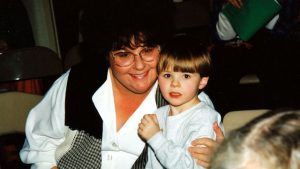 This is my Mom. I’ve told you her story many times before. It is, quite honestly, a miracle and I’m convinced she remains a guiding force even from the other side for her family. Some days what I wouldn’t give to be where she is, sharing in the conversations I know she is having. But at the same time I enjoy now a connection with my Mom that is entirely unique. It is a closeness I cannot quite describe but it is all about family and all of my family – past, present and future. I very keenly feel that influence.
This is my Mom. I’ve told you her story many times before. It is, quite honestly, a miracle and I’m convinced she remains a guiding force even from the other side for her family. Some days what I wouldn’t give to be where she is, sharing in the conversations I know she is having. But at the same time I enjoy now a connection with my Mom that is entirely unique. It is a closeness I cannot quite describe but it is all about family and all of my family – past, present and future. I very keenly feel that influence.
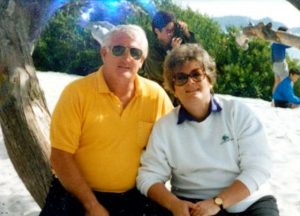 These are my in-laws, Gary and Barbara Gillen. I’ve not shared much of the Gillen family history here that I know and I’ll tell you why: it’s not my place. I’ve worked on it, and I’m interested in it, but that joy of discovery belongs to them, my wife, her siblings and my children and grandchildren. Like my Grandma did with me, I can encourage and advise. Here is what my children already know about my wife’s parents: they are a chosen generation in their family to kick-start the work of family history there and they have done a wonderful job of it already, even if they don’t know it. I have marveled at how they have built a deep relationship with my children though the years and a thousand miles have separated them. This has come from a responsive interest in the lives of the kids and a patient, peaceful and kind representation of all things family. Sandy’s Dad – and everyone calls him Pops – may not be the strongest with names and dates but there isn’t a better storyteller on God’s green earth. I have watched him time and again take the kids back in time and make them part of the family he has always known and appreciated. Nonny, Sandy’s Mom, is a hometown girl who loves where she lives and the life she has had there. She seems to know everyone and can tell you their story. She is a peacemaker who has nothing but love to share and her influence with my children is so much greater than she realizes. That’s just the way it is with grandmothers, I’ve decided.
These are my in-laws, Gary and Barbara Gillen. I’ve not shared much of the Gillen family history here that I know and I’ll tell you why: it’s not my place. I’ve worked on it, and I’m interested in it, but that joy of discovery belongs to them, my wife, her siblings and my children and grandchildren. Like my Grandma did with me, I can encourage and advise. Here is what my children already know about my wife’s parents: they are a chosen generation in their family to kick-start the work of family history there and they have done a wonderful job of it already, even if they don’t know it. I have marveled at how they have built a deep relationship with my children though the years and a thousand miles have separated them. This has come from a responsive interest in the lives of the kids and a patient, peaceful and kind representation of all things family. Sandy’s Dad – and everyone calls him Pops – may not be the strongest with names and dates but there isn’t a better storyteller on God’s green earth. I have watched him time and again take the kids back in time and make them part of the family he has always known and appreciated. Nonny, Sandy’s Mom, is a hometown girl who loves where she lives and the life she has had there. She seems to know everyone and can tell you their story. She is a peacemaker who has nothing but love to share and her influence with my children is so much greater than she realizes. That’s just the way it is with grandmothers, I’ve decided.
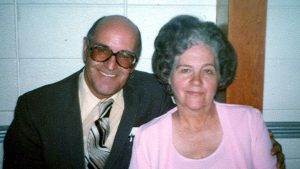 This is a picture of my Uncle Gerald and my great Aunt Milda, my Grandma’s sister. Both were a joy to me. Gerald in particular reminds me much of Pops in that he could tell a story that would keep you in stitches. He always seemed to have a tear in one eye and a twinkle in the other. This was man who took joy in every member of his family, who spoke nothing but kindness in each one of them, and whose personal habits were completely unselfish. I can remember, just watching him speak to Milda, and how he spoke to me, that as I child I thought, “I want to be just like him.” Over the years I have contemplated that feeling I had and wondered if I could ever be that kind of giant influence on the heart of a child. Gerald made me feel important, and like my grandparents, he tried to get me to understand I was part of something greater. It humbles me now just to think of him and his goodness.
This is a picture of my Uncle Gerald and my great Aunt Milda, my Grandma’s sister. Both were a joy to me. Gerald in particular reminds me much of Pops in that he could tell a story that would keep you in stitches. He always seemed to have a tear in one eye and a twinkle in the other. This was man who took joy in every member of his family, who spoke nothing but kindness in each one of them, and whose personal habits were completely unselfish. I can remember, just watching him speak to Milda, and how he spoke to me, that as I child I thought, “I want to be just like him.” Over the years I have contemplated that feeling I had and wondered if I could ever be that kind of giant influence on the heart of a child. Gerald made me feel important, and like my grandparents, he tried to get me to understand I was part of something greater. It humbles me now just to think of him and his goodness.
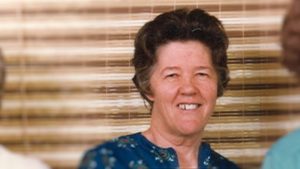 Here is another one of my Grandma’s sisters, my Aunt Allie. That is how I’ve always thought of her – she was “mine”. I wasn’t able to know Aldyth growing up but I recall so many times my father talking about “my Aunt Allie”. I got to know her when she came to the rescue when Grandma got so sick. She set everything aside in her life and came and just took care of business there at Grandma’s house. It was so like her that nobody else in the family seemed to be phased at her commitment. She just came and served. And while she served she smiled, she laughed, she remembered. For me she was instant family from the moment I met her. Like so many others I speak of here she invested in me and took time to tell me things about her upbringing, my Grandma’s life and my father’s life. She cried when she told me about her children and she laughed and cried some more when she talked about her grandchildren. Aldyth was also committed, just like all of her sisters, to the work of family history and I find her name on things everywhere I look. Her love wasn’t reserved just for me, clearly, but she sure made me feel like it was.
Here is another one of my Grandma’s sisters, my Aunt Allie. That is how I’ve always thought of her – she was “mine”. I wasn’t able to know Aldyth growing up but I recall so many times my father talking about “my Aunt Allie”. I got to know her when she came to the rescue when Grandma got so sick. She set everything aside in her life and came and just took care of business there at Grandma’s house. It was so like her that nobody else in the family seemed to be phased at her commitment. She just came and served. And while she served she smiled, she laughed, she remembered. For me she was instant family from the moment I met her. Like so many others I speak of here she invested in me and took time to tell me things about her upbringing, my Grandma’s life and my father’s life. She cried when she told me about her children and she laughed and cried some more when she talked about her grandchildren. Aldyth was also committed, just like all of her sisters, to the work of family history and I find her name on things everywhere I look. Her love wasn’t reserved just for me, clearly, but she sure made me feel like it was.
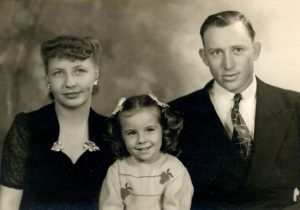 Here is a picture of my Mom, around age three with her mother and her step father, Pat Caldwell. As a child and even today we refer to him as Bumpa. Pat Caldwell does not fit the mold of the most of the other men I speak of here. His upbringing was completely different and his journey was entirely unique. But he gave me valuable lessons related to family – how to be a step-parent, how to be a loyal son, how to even be a grandfather. I had unique experiences with him that I never had with my other grandfather. Some of those experiences were physical – working side by side. Other times were just talking, sharing philosophies, man to man. Bumpa was a man who carried great love yet didn’t quite know how to express it. He was generous. He was respectful of differences. If I disagreed with him he would sometimes say, “Well, maybe you know something I don’t know yet”. He was a man who learned his lessons and applied change. He was free with sharing his mistakes. I could see where my Mom got her sometimes brutal honesty and I came to see that as a strength and something to admire. I admired it greatly in him.
Here is a picture of my Mom, around age three with her mother and her step father, Pat Caldwell. As a child and even today we refer to him as Bumpa. Pat Caldwell does not fit the mold of the most of the other men I speak of here. His upbringing was completely different and his journey was entirely unique. But he gave me valuable lessons related to family – how to be a step-parent, how to be a loyal son, how to even be a grandfather. I had unique experiences with him that I never had with my other grandfather. Some of those experiences were physical – working side by side. Other times were just talking, sharing philosophies, man to man. Bumpa was a man who carried great love yet didn’t quite know how to express it. He was generous. He was respectful of differences. If I disagreed with him he would sometimes say, “Well, maybe you know something I don’t know yet”. He was a man who learned his lessons and applied change. He was free with sharing his mistakes. I could see where my Mom got her sometimes brutal honesty and I came to see that as a strength and something to admire. I admired it greatly in him.
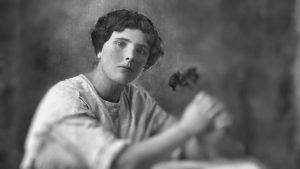 This is a photo of Mary Ann Smith Westover, my great grandmother. She died before I was born. All that I have heard about her speaks of how she was a force to be reckoned with. I recognize her as one of my influencers because she left a physical record that not only advanced my knowledge of family history on many sides but also demonstrated to me her tremendous faith and hope in the work of temples. Her hand-written family group sheets – complete in many cases with photographs (quite the feat back in those days) are really what remains at the foundation of our total family history efforts. She was visionary in the respect that as a Mother and grandmother she not only took pictures but organized and stored them into albums. She wanted them preserved and I think she would be happy to know what’s become of them and how they are so greatly valued by us, the later generations.
This is a photo of Mary Ann Smith Westover, my great grandmother. She died before I was born. All that I have heard about her speaks of how she was a force to be reckoned with. I recognize her as one of my influencers because she left a physical record that not only advanced my knowledge of family history on many sides but also demonstrated to me her tremendous faith and hope in the work of temples. Her hand-written family group sheets – complete in many cases with photographs (quite the feat back in those days) are really what remains at the foundation of our total family history efforts. She was visionary in the respect that as a Mother and grandmother she not only took pictures but organized and stored them into albums. She wanted them preserved and I think she would be happy to know what’s become of them and how they are so greatly valued by us, the later generations.
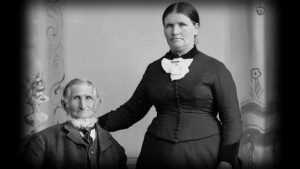 Along those lines are these Smith grandparents of Mary Ann Smith pictured here – Albert and Sophia Smith, of Manti, Utah. Talk about vision. Both of these folks embraced the gospel of Jesus Christ with their whole lives. Family and the love of God was what it was all about and no amount of effort required would stay them from moving that forward. These pioneers built the temples they so desperately came to Zion for and found a way to get generations of their family past through the temple on their behalf. Better than 1500 family names on both sides were researched, gathered and then organized for ordinance work that was completed between 1888 and 1892. What an epic accomplishment!
Along those lines are these Smith grandparents of Mary Ann Smith pictured here – Albert and Sophia Smith, of Manti, Utah. Talk about vision. Both of these folks embraced the gospel of Jesus Christ with their whole lives. Family and the love of God was what it was all about and no amount of effort required would stay them from moving that forward. These pioneers built the temples they so desperately came to Zion for and found a way to get generations of their family past through the temple on their behalf. Better than 1500 family names on both sides were researched, gathered and then organized for ordinance work that was completed between 1888 and 1892. What an epic accomplishment!
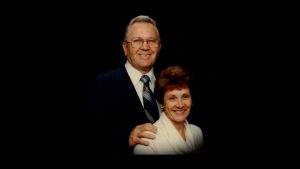 Here is one of their great grandsons, my Uncle Darrell, with another of Grandma’s sisters, my Aunt Evie. I do not think enough can be said of their many efforts on behalf of the Westover and Riggs family lines (and thus the Smiths and the Snows and all the others). I always felt singled out among my siblings by my Uncle Darrell, whose efforts to advance the deep history of the family seemed to be targeted squarely on me. He sometimes quizzed me. I can recall going to a Priesthood meeting with him when I was thirteen, with him sitting on my left and my Dad sitting on my right. It was quiet until he turned to me and asked, “Tell me what you know about Albert Smith.” And he just never stopped with that stuff. I was nearly 50 years old and he was still doing it to me. Oh, how I miss him and how I wish he would grill me again. Fortunately my aunt Evie has been less inclined over the years to put me on the spot. She’s got the grandma approach down pretty good and it can’t just be because she has a hundred billion grandchildren and great grandchildren now. I don’t know what they sprinkled on the Wheaties of the Riggs children back in the day but I weep when I think about each one of them and their sweet love of all things family.
Here is one of their great grandsons, my Uncle Darrell, with another of Grandma’s sisters, my Aunt Evie. I do not think enough can be said of their many efforts on behalf of the Westover and Riggs family lines (and thus the Smiths and the Snows and all the others). I always felt singled out among my siblings by my Uncle Darrell, whose efforts to advance the deep history of the family seemed to be targeted squarely on me. He sometimes quizzed me. I can recall going to a Priesthood meeting with him when I was thirteen, with him sitting on my left and my Dad sitting on my right. It was quiet until he turned to me and asked, “Tell me what you know about Albert Smith.” And he just never stopped with that stuff. I was nearly 50 years old and he was still doing it to me. Oh, how I miss him and how I wish he would grill me again. Fortunately my aunt Evie has been less inclined over the years to put me on the spot. She’s got the grandma approach down pretty good and it can’t just be because she has a hundred billion grandchildren and great grandchildren now. I don’t know what they sprinkled on the Wheaties of the Riggs children back in the day but I weep when I think about each one of them and their sweet love of all things family.
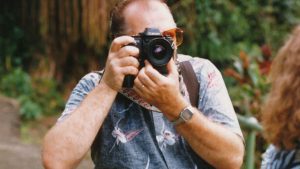 Here’s a picture of my father and I have a million more just like this. Dad would always say he belonged on just one side of the camera and if you look at some of the pictures of him it is clear why he feels that way. From the youngest age I have heard my Dad tell the family stories. He’s not been one to engage in tree making or data gathering of names and dates but he’s got a clear vision of the entire epic family story. From my Dad I have learned to reverence it and to celebrate it. Like my Dad, I have a hard time feeling worthy of them. Dad has always encouraged my work in family history and these days I go to him first with news of any discovery. He advises me on this site and what we store here. But I think the greatest lesson from my Dad has been his involvement with my Mother’s family and the great role he played in bringing them into her life. My Mom would not have accomplished all she did without my Dad doing what he did. Talk about a proxy work! And now, with Mom passed, I work side by side with my Dad in family history efforts that will have lasting impact for those generations that follow us. I also post that picture of him behind the camera for another reason and I’m serious about this. You see, I’ve always given Dad a bit of a hard time about all the photos he’s taken of things like the Grand Canyon. But along with those efforts has been a very dedicated effort to document through photography the history of the family – and that includes many hours as a kid when Dad would copy old photographs and we’d develop them and then share them. Dad was way ahead of his time in all this.
Here’s a picture of my father and I have a million more just like this. Dad would always say he belonged on just one side of the camera and if you look at some of the pictures of him it is clear why he feels that way. From the youngest age I have heard my Dad tell the family stories. He’s not been one to engage in tree making or data gathering of names and dates but he’s got a clear vision of the entire epic family story. From my Dad I have learned to reverence it and to celebrate it. Like my Dad, I have a hard time feeling worthy of them. Dad has always encouraged my work in family history and these days I go to him first with news of any discovery. He advises me on this site and what we store here. But I think the greatest lesson from my Dad has been his involvement with my Mother’s family and the great role he played in bringing them into her life. My Mom would not have accomplished all she did without my Dad doing what he did. Talk about a proxy work! And now, with Mom passed, I work side by side with my Dad in family history efforts that will have lasting impact for those generations that follow us. I also post that picture of him behind the camera for another reason and I’m serious about this. You see, I’ve always given Dad a bit of a hard time about all the photos he’s taken of things like the Grand Canyon. But along with those efforts has been a very dedicated effort to document through photography the history of the family – and that includes many hours as a kid when Dad would copy old photographs and we’d develop them and then share them. Dad was way ahead of his time in all this.
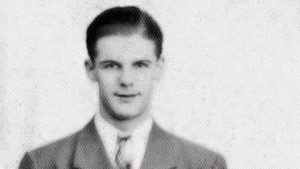 Here’s a picture of my great Uncle Pete. We got to know Pete only after Dad called him while he was on a business trip to Minnesota. Not many years after that Pete and Alice and Bunni came to California to be sealed in the temple. A few years later, on a whim, I made a lone car ride to Minnesota and spent a week in his home. Day and night Pete invested great effort in me to share the history of the Begich family. He shared stories and pictures. And he made a very difficult effort with his mother, who was still living, but who just could not handle the pain of seeing me. He explained to me why it was so hard on her and felt that my effort to come to Minnesota was inspired. I know he wanted his mother and my mother to meet, and my being there trying to break the ice was a step in that direction. It didn’t happen and that fact made Pete weep. But he honored his mother and he honored me with his efforts. He was so very kind to me and I cannot wait to thank him again.
Here’s a picture of my great Uncle Pete. We got to know Pete only after Dad called him while he was on a business trip to Minnesota. Not many years after that Pete and Alice and Bunni came to California to be sealed in the temple. A few years later, on a whim, I made a lone car ride to Minnesota and spent a week in his home. Day and night Pete invested great effort in me to share the history of the Begich family. He shared stories and pictures. And he made a very difficult effort with his mother, who was still living, but who just could not handle the pain of seeing me. He explained to me why it was so hard on her and felt that my effort to come to Minnesota was inspired. I know he wanted his mother and my mother to meet, and my being there trying to break the ice was a step in that direction. It didn’t happen and that fact made Pete weep. But he honored his mother and he honored me with his efforts. He was so very kind to me and I cannot wait to thank him again.
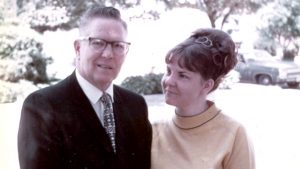 Here is my Aunt LaRee, my father’s sister. Like my father she shares a great reverence for her heritage. How could she not, being raised by my grandparents? What LaRee has taught me are lessons in seeing people more deeply and in forgiving their faults. I love this picture in particular of her as she looks up to her father, my Grandpa. In some ways I’ve felt Grandpa was a misunderstood man. LaRee has helped me to better understand him and appreciate him. She has helped me to see that she has that respect for him not just because he is her father but also because he really was a great man. LaRee to me is also one of those family members who always will be family no matter what. I can go years without seeing her and then sit down and chat with LaRee and Will like a day has not passed. I consider her “up there” with all my great aunts and that’s no small thing. That is just how I feel about her.
Here is my Aunt LaRee, my father’s sister. Like my father she shares a great reverence for her heritage. How could she not, being raised by my grandparents? What LaRee has taught me are lessons in seeing people more deeply and in forgiving their faults. I love this picture in particular of her as she looks up to her father, my Grandpa. In some ways I’ve felt Grandpa was a misunderstood man. LaRee has helped me to better understand him and appreciate him. She has helped me to see that she has that respect for him not just because he is her father but also because he really was a great man. LaRee to me is also one of those family members who always will be family no matter what. I can go years without seeing her and then sit down and chat with LaRee and Will like a day has not passed. I consider her “up there” with all my great aunts and that’s no small thing. That is just how I feel about her.
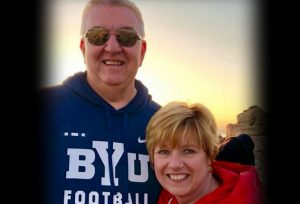 This is my brother Jay, and my sister-in-law, Mary. I have spoken of Mary many times before because she more than anyone else has been in the trenches of family history research and discovery. But Mary has had to discover her family on her own and she was done a tremendous work. She has brought various members of her still-living family together and made them family again. I love to get messages from her when something new pops up or when she discovers a rich new vein of information. Mary possesses a passionate vision that I equate with that of my Grandmother’s. In fact, I can’t help but think how Grandma and Mary would have gotten along and how they would have thrilled in each other. Mary doesn’t give up. She turns over every stone, hops every fence, and asks every question when she hits a dead end. Miracles happen as a result. It is a joy to witness.
This is my brother Jay, and my sister-in-law, Mary. I have spoken of Mary many times before because she more than anyone else has been in the trenches of family history research and discovery. But Mary has had to discover her family on her own and she was done a tremendous work. She has brought various members of her still-living family together and made them family again. I love to get messages from her when something new pops up or when she discovers a rich new vein of information. Mary possesses a passionate vision that I equate with that of my Grandmother’s. In fact, I can’t help but think how Grandma and Mary would have gotten along and how they would have thrilled in each other. Mary doesn’t give up. She turns over every stone, hops every fence, and asks every question when she hits a dead end. Miracles happen as a result. It is a joy to witness.
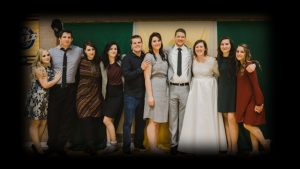 These are my children. They put up with me always talking about family history. I picture them here as influencers on family history because they have in their young adult lives remained so very close and have the vision – every last one of them – to recognize not only the value but real need they have for that in the future. They are all best friends and that makes me weep more than they can ever know. I know that they will eventually see that the safety and the warmth and the love they feel to each other extends to family on every side and it’s here waiting for them to embrace. When they discover it they will take great joy in it. Oh, how I wish to see that day. They will find people just like them and they will find others who are just like they are to each other. These are treasures that await them and they will want for their children to have them too.
These are my children. They put up with me always talking about family history. I picture them here as influencers on family history because they have in their young adult lives remained so very close and have the vision – every last one of them – to recognize not only the value but real need they have for that in the future. They are all best friends and that makes me weep more than they can ever know. I know that they will eventually see that the safety and the warmth and the love they feel to each other extends to family on every side and it’s here waiting for them to embrace. When they discover it they will take great joy in it. Oh, how I wish to see that day. They will find people just like them and they will find others who are just like they are to each other. These are treasures that await them and they will want for their children to have them too.
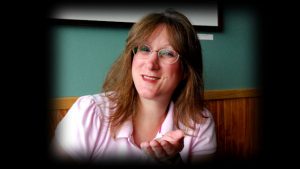 And lastly, this is my wife, Sandy. She would tell you that she doesn’t belong with all the people I’ve mentioned above because she hasn’t done her family history. She would tell you that she’s not organized, that she never made baby books for the kids like my mother did, and that all our pictures were taken by me, and that she’s not worthy and she’s guilty and her book of life is just a book of shame when it comes to all this and blah, blah, blah. Don’t listen to her. Let me tell you where her gift is with all this. Sandy has an ability to walk into a room a connect with anyone there. She sees the heart, feels the pain and she lifts when she can sit down and hold a hand and share a tear. It delighted me to see her get close to my mother and how precious she became to my Mom as a result. Few people knew my Mom like Sandy did. She has a particular “weakness” (if you can call it that) for the elderly, especially little old men. It seems every little old man reminds her of her father. There’s a lot of love in that statement.
And lastly, this is my wife, Sandy. She would tell you that she doesn’t belong with all the people I’ve mentioned above because she hasn’t done her family history. She would tell you that she’s not organized, that she never made baby books for the kids like my mother did, and that all our pictures were taken by me, and that she’s not worthy and she’s guilty and her book of life is just a book of shame when it comes to all this and blah, blah, blah. Don’t listen to her. Let me tell you where her gift is with all this. Sandy has an ability to walk into a room a connect with anyone there. She sees the heart, feels the pain and she lifts when she can sit down and hold a hand and share a tear. It delighted me to see her get close to my mother and how precious she became to my Mom as a result. Few people knew my Mom like Sandy did. She has a particular “weakness” (if you can call it that) for the elderly, especially little old men. It seems every little old man reminds her of her father. There’s a lot of love in that statement.
These are only some of the family historians in our family. There are many others I could mention. Each brings a little something unique to the effort. But common among them all is realization of what a powerful thing for good the family is. In them is where the real joy of life – both this life and the life to come – is to be found.
